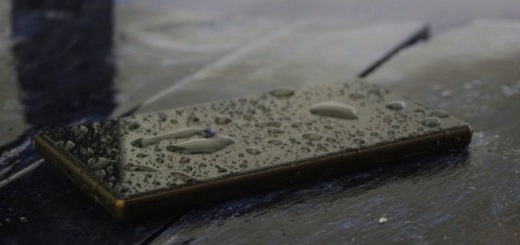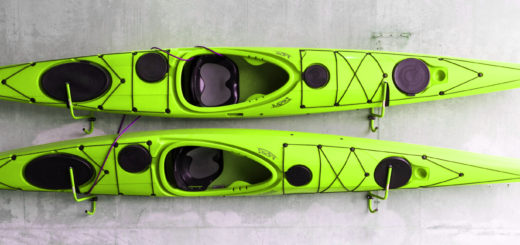Safe Water Temperature for Kayaking
As the spring approaches, it is important to know when conditions will be safe again for kayaking. Although possible to kayak whenever water temperatures are above freezing, it is definitely not safe yet for typical recreational kayaking.
It is necessary to check the water temperature for the body of water you plan to paddle in. The water temperature lags behind the changing air temperature considerably, especially during the change of season. Even when outside air temperatures reach a comfortable range, water temperature of a lake could remain dangerous for several more weeks. The effects of being submerged in cold water are much more severe than being in air at the same temperature – for example, 50F air doesn’t seem too terribly cold (depending on the climate one is used to), however 50F water is very cold water and life threatening.
The advice below is geared towards recreational kayakers, paddling a few times per season and assuming normal kayaking attire. While advanced boaters can use wet suits and other advanced equipment to kayak in colder conditions, intentional cold-weather kayaking a sea-faring is outside of the scope of what we want to address in this article.
Water Temperature for Kayaking
Although air temperature might make it feel warm enough for safe boating, water temperature is what matters most. According to the national center for cold water safety, any water temperature below 70F (21C) should be treated with caution. Breathing is slightly effected from 77F – 70F. From 70F-60F more serious respiratory effects such as difficulty controlling or holding breath start to occur. At 60F-50F exposure is extremely dangerous and life threatening. In this range complete loss of ability to control breathing, hypothermia, and intense cold shock are all possible.
Cold shock is a condition that occurs when the body is submerged into cold water. Symptoms of cold shock are more likely to cause drowning than hypothermia. There are three dangerous symptoms of cold shock – loss of ability to control breathing, heart and blood pressure are effected, and a decline in mental state. Gasping, hyperventilation (rapid, out of control breathing), sensation of suffocation, difficulty holding breath can all be fatal when trying to remain above water until rescue is possible. In addition to these breathing related effects, the body’s heart rate and blood pressure will spike instantaneously when submerged in cold water. Further yet, the submerged person will become confused and disoriented. Reaction time will be increased, panic and fear sets in, and pain is possible if temperatures are cold enough. These all make cold shock a very real and dangerous threat. It is important to note that these effects are just as likely at warmer temperatures than they are at near freezing temperatures. As a reminder cold shock symptoms can occur in temperatures even as high as 50-60F!
Air Temperature for Kayaking
Air temperature has much less effect on the safety of kayaking. Even in very high air temperatures, cold water will be dangerous, and the water temperature is what will determine if it is safe to go boating.
Combined “Rule-of-Thumb”
A common rule of thumb is that if the air temperature plus the water temperature is less than 120, special precautions should be taken. This varies, some sources say if less than 100. Personally, I do not like the “rules of thumb” because a high air temperature and low water temperature, which is common in my area can reach 120 while still having a water temperature that I would consider too cold for kayaking.
Where to find water temperature?
The national weather service provides water temperature for many bodies of water. Simply visit their website, search for a nearby town, and links should be available for the surrounding lakes and rivers. Weather underground offers marine weather forecasts that include water temperature. As with most things these days, a Google search should point you in the right direction if these other sources aren’t available for the area you are planning a paddling trip.
Sources:
- https://www.rei.com/learn/expert-advice/kayak-safety.html
- http://www.coldwatersafety.org
- https://www.wunderground.com/marine-weather/
- http://www.weather.gov/



